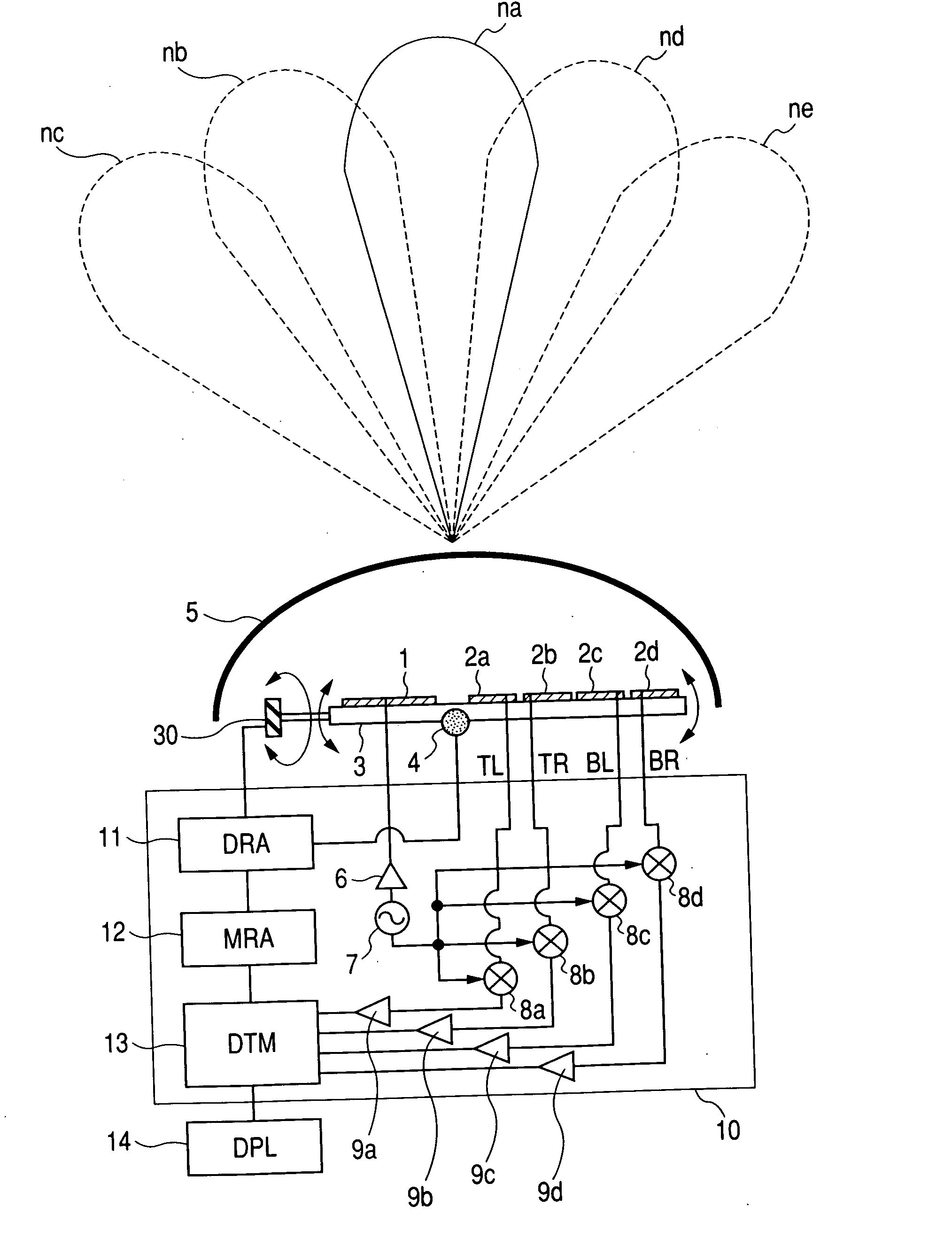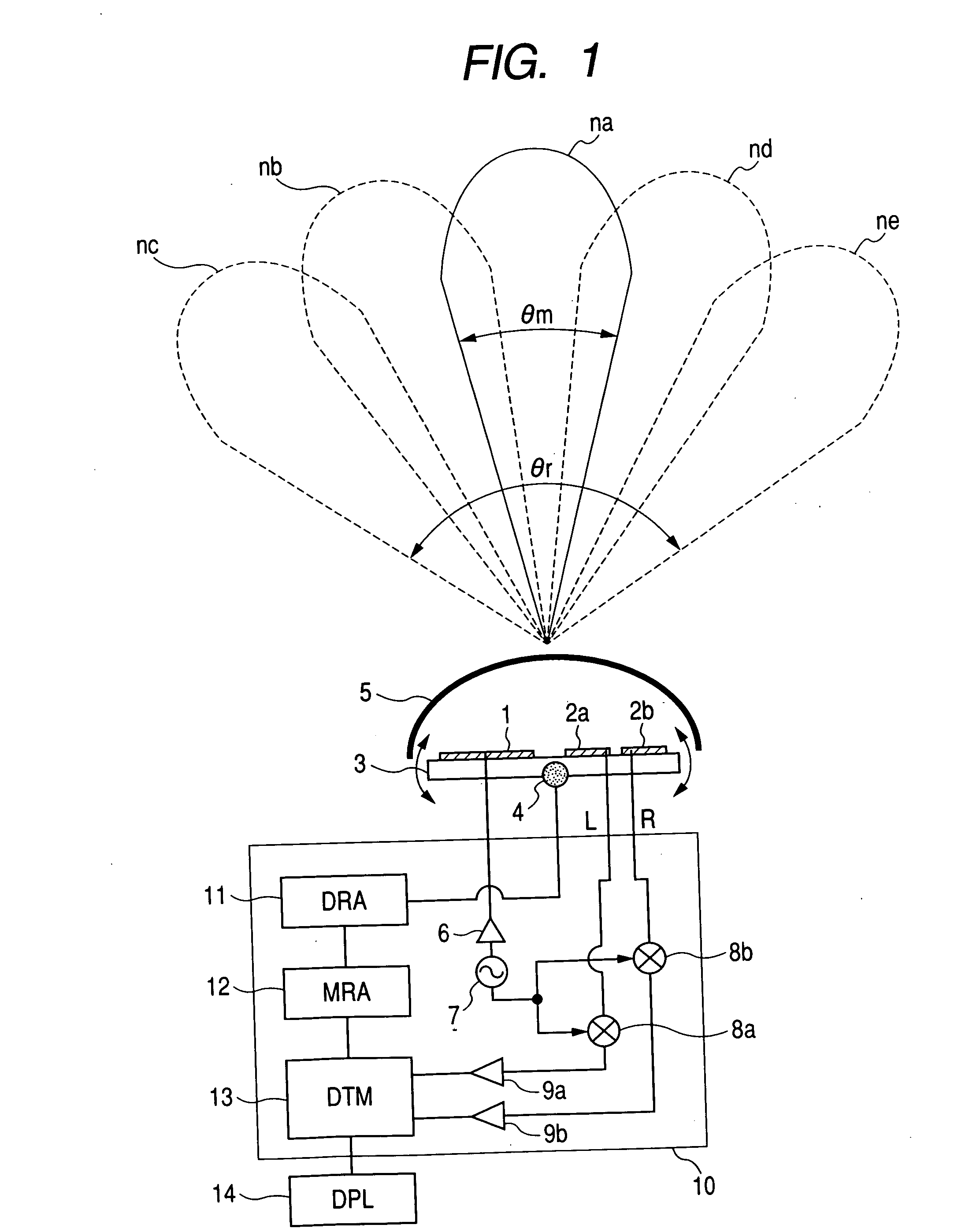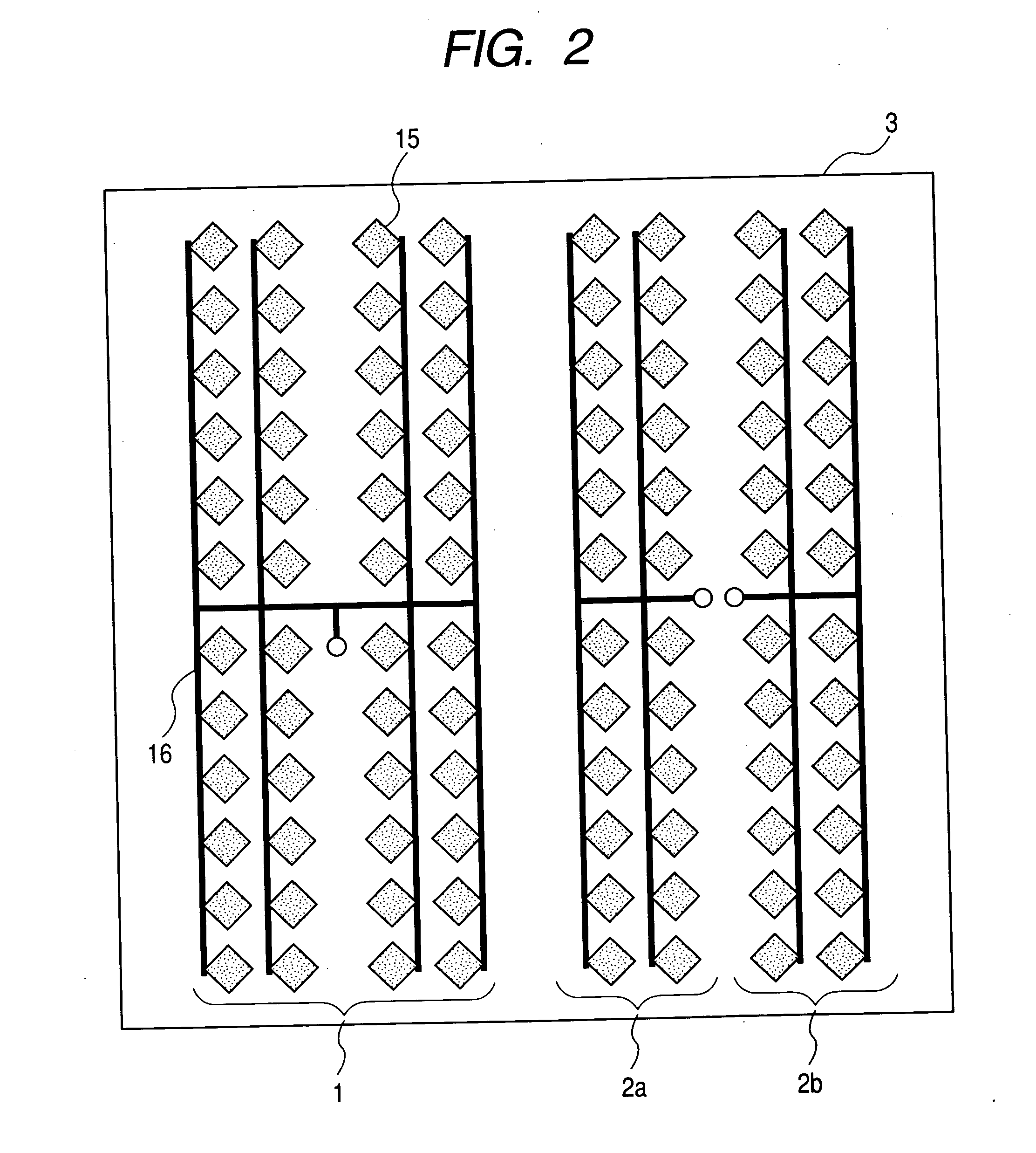Automotive radar
a technology for autos and radars, applied in the field of autos, can solve the problems of unsuitable for widening the detection range, and entail increasing the size and cost of beams, so as to increase the signal processing load for detection, widen the overall detection range, and reduce the effect of beam siz
- Summary
- Abstract
- Description
- Claims
- Application Information
AI Technical Summary
Benefits of technology
Problems solved by technology
Method used
Image
Examples
first embodiment
[0040]FIG. 1 is a block diagram showing the present invention. A transmitting array antenna (transmitting antenna) 1 and receiving array antennas (receiving antennas) 2a and 2b are arranged on an antenna plate 3. A millimeter-wave signal generated by an oscillator 7 is sent through a power amplifier 6 to the transmitting array antenna 1. A transmitted signal as an electromagnetic wave from the transmitting array antenna 1 is reflected by a target (not shown) and the reflected signal is received by the receiving array antennas 2a and 2b, which then outputs received signals L and R. The received signals L and R enter mixers 8a and 8b respectively where they are mixed with an output signal from the oscillator 7 and converted into intermediate frequency signals. The intermediate frequency signals are amplified by low-noise amplifiers 9a and 9b before entering a signal processing circuit (DTM) 13.
[0041] An azimuth motor 4 rotates the antenna plate 3 in the azimuth direction with the azim...
third embodiment
[0071] As in the third embodiment, the automotive radar in this embodiment performs wide-angle detection by scanning a narrow detection angle. This excludes signals beyond the detection angle range. For example, right and left roadside objects can be isolated from a target on the road in terms of time. In this case, because one antenna unit incorporating transmitting and receiving antennas is rotated, the beam shape does not change with direction; in addition, there is rest time in the course of scanning, and signal processing is performed during the rest time, so that no adjustment is needed in signal processing. Therefore, high speed signal processing can be performed to detect a target in a wide angle range. In addition, since only one antenna unit incorporating a set of transmitting and receiving antennas is used as mentioned above, the system need not be large. Here, scanning is made on an antenna detection angle for identifying the direction of a target in accordance with the ...
PUM
 Login to View More
Login to View More Abstract
Description
Claims
Application Information
 Login to View More
Login to View More - R&D
- Intellectual Property
- Life Sciences
- Materials
- Tech Scout
- Unparalleled Data Quality
- Higher Quality Content
- 60% Fewer Hallucinations
Browse by: Latest US Patents, China's latest patents, Technical Efficacy Thesaurus, Application Domain, Technology Topic, Popular Technical Reports.
© 2025 PatSnap. All rights reserved.Legal|Privacy policy|Modern Slavery Act Transparency Statement|Sitemap|About US| Contact US: help@patsnap.com



